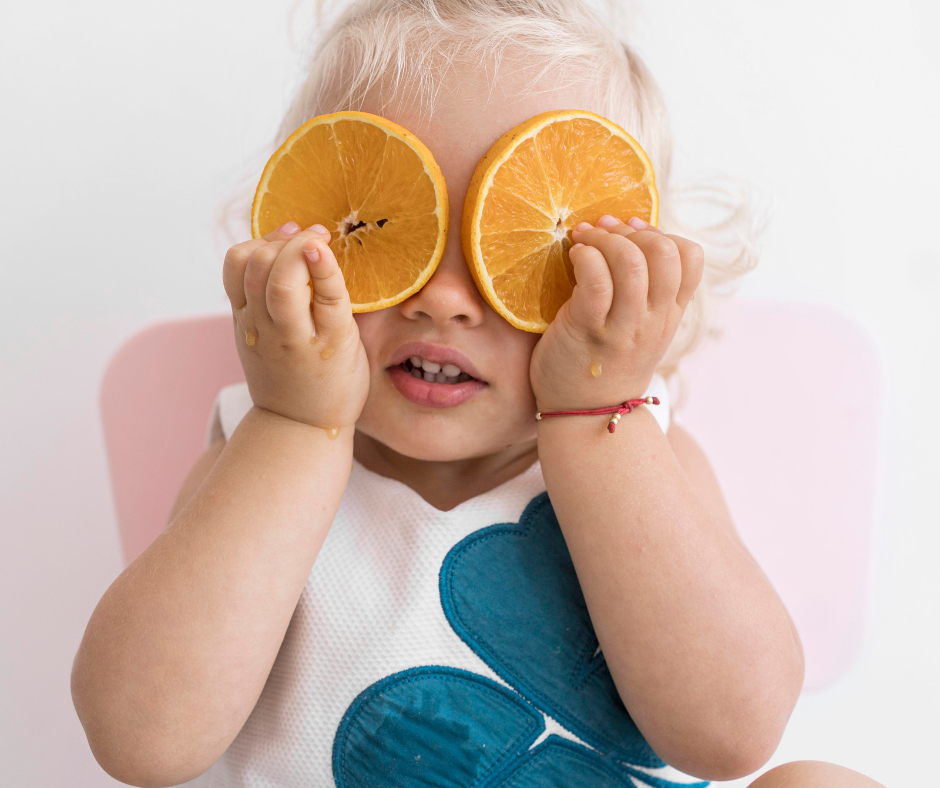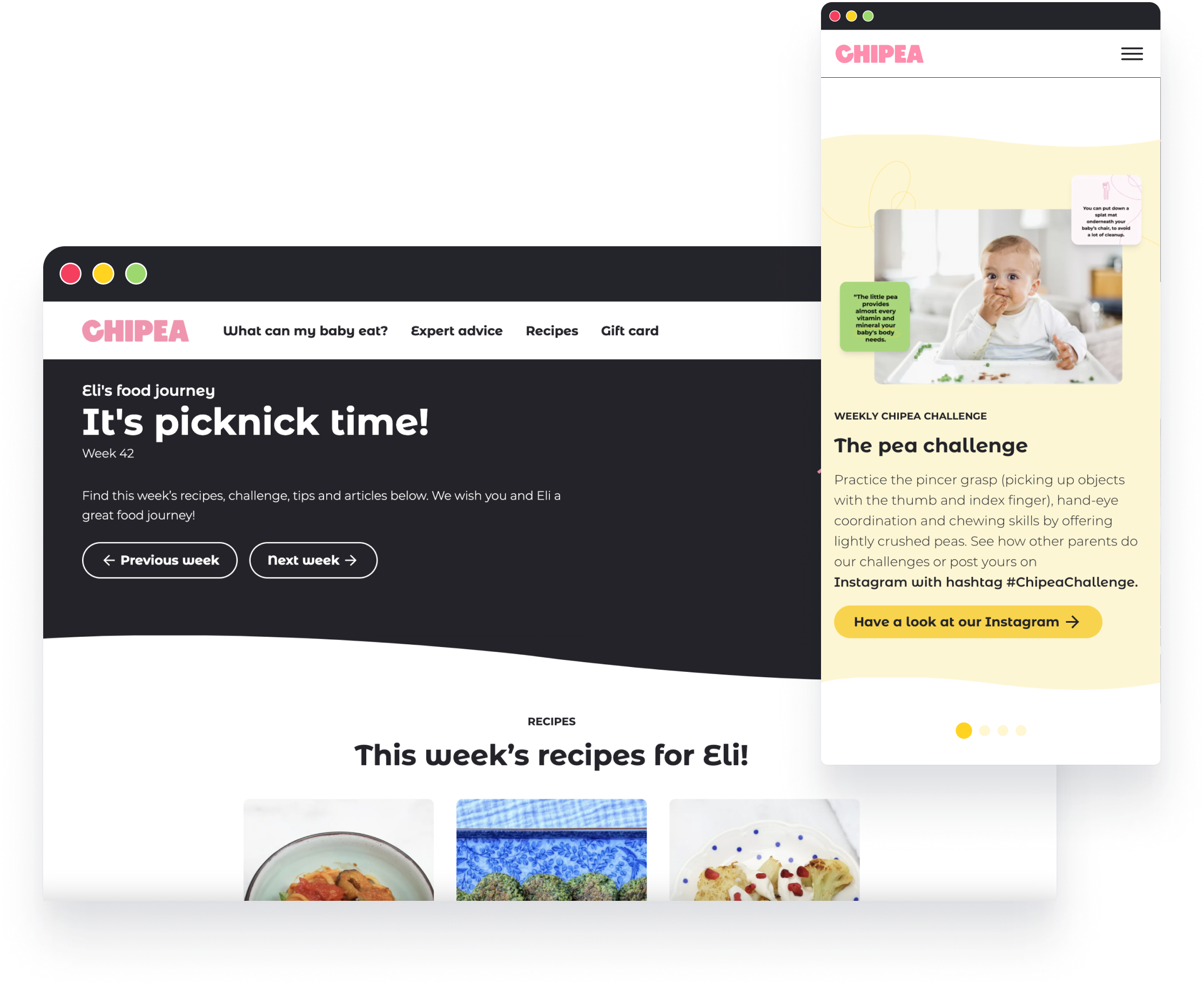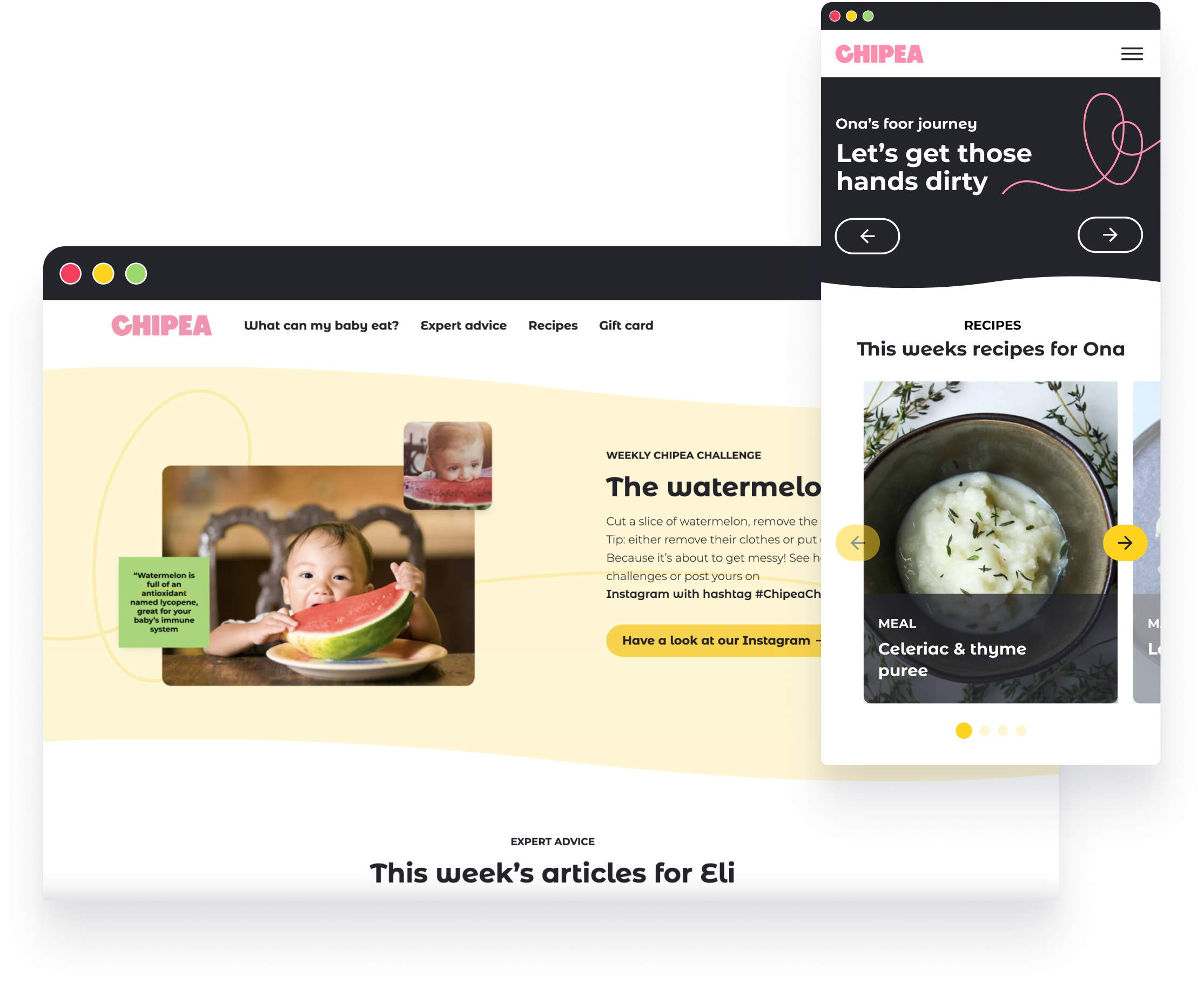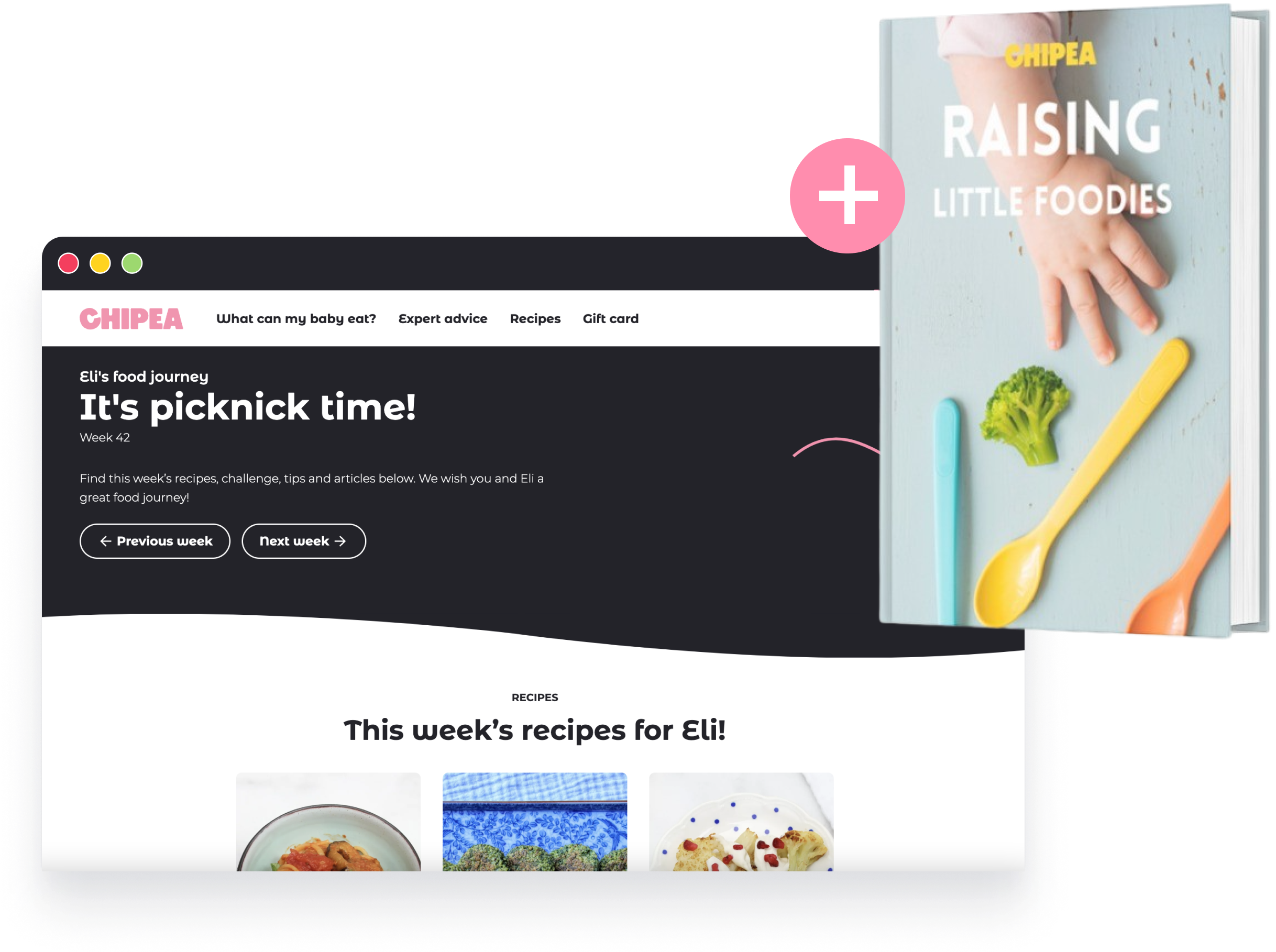NHS Start for Life programme on weaning
The UK government has started a programme to provide parents with more information and advice on weaning. Neil O'Brien, minister for primary care has stated: "The first 1,001 days are crucial for a child's development." And how right he is!

What is the Star for Life programma of the NHS?
The Start for Life programme is a national health campaign launched by the UK's National Health Service (NHS) to provide guidance and support to new and expectant parents on giving their baby the best possible start in life.
Overall, the aim is to improve the health and wellbeing of babies and young children by providing parents with the information and support they need to make informed decisions about their baby's care. This is exactly what we strive to do too.
Chipea wants to assist parents in making choices when it comes to feeding their babies and young children and hopefully in that way help them raise good eaters. We follow recommendations made by the European Food Safety Authority, which are based on a broad set of studies.
Let's start by going over some decisions parents face at the start of weaning.
When is the best time to start introducing solid food?
Generally it has been concluded that anywhere between the ages of 4 and 6 months is ok to start. The European Food Safety Authority has written much on the topic. Here you can read their reports and conclusions. It is widely agreed upon that starting before 4 months is not recommended because babies’ digestive systems are not ready yet. They also don’t have the motor skills to start eating before that age. If you’re unsure about when to start solids, it’s always best to consult your paediatrician.
When are babies ready for solids: what are the signs?
There is nothing wrong with giving it a try if you think your baby is ready. The signs for readiness depend on whether you want to spoon feed or go the baby-led weaning approach. In any case, it's important your child can sit - this can be assisted sitting. More on baby led weaning below.
If you go for the spoon feeding method, it's important to look at your baby's reaction to food. Offer them a spoonful of vegetable puree and see how they react. If they seem interested and try to eat it, you can offer another spoonful or more the next day. If there’s no interest at all, you might want to wait a few days or even weeks to try again.
One week can sometimes make a lot of difference. The point is, don’t feel pressured into starting very soon or waiting as long as you can. Your baby is unique and no one knows your baby better than you.
How to introduce solids
If you feel like your baby is ready to start solids at 4 months old, start with some very simple vegetable purees. At this point it’s all about getting used to having something other than milk going into the mouth and their digestive system.
At around 5 months old you could start introducing fruit as well. We prefer starting with vegetables since they’re not as sweet as fruit. Since babies have a natural preference for sweet tastes, the introduction of fruit should generally not be an issue. That’s why we want them to be accustomed to grassy, earthy or even bitter flavours early on as well.
But again, these are not rules set in stone. You can introduce fruit first or at the same time as vegetables, both are perfectly safe and acceptable.
What are the main weaning methods?
One of the first decisions in that process is choosing which feeding method you want to go for. There are many strong opinions about feeding methods but we’re here to tell you, they are almost all based on personal preference. What works for one family, or one child does not necessarily work for another.
So take all this well intended advice with a grain of salt, inform yourself and choose the method you think will work best for your family. That doesn’t mean you can’t switch later on, if you see that your child isn’t responding as well.
There are different feeding methods, which are mainly divided between the traditional approach of spoon-feeding purees and baby-led weaning, where babies feed themselves completely with pieces of food, rather than pureed food.
Baby-led weaning
With baby-led weaning, babies completely feed themselves. You, as a caregiver, don’t feed your child but you provide pieces of food that are suitable for his age and let your child feed himself. There has been research on the impact of this method on food acceptance but nothing conclusive has come out of it yet.
What is true, is that you’re giving all the control to your child, letting them decide how much they want to eat and when they want to stop. This is definitely a good thing. Babies need to learn to know when they are hungry and when they are full.
If you decide to go for this approach, we strongly advise you to read more into it. There are a number of good books written on the topic, informing you on how to go about it safely.
Spoon-fed or puree method
With this method, you feed your child yourself, with a spoon. You go from smooth purees to more chunky ones, to actual pieces of food. In this way, you are in control. You’re holding the spoon and bringing the food to your baby’s mouth. That doesn’t mean your baby has no control at all. It’s up to the caregivers to learn to recognise signs of hunger and satiation and to stop feeding whenever you notice your child has had enough.
How to choose the weaning method that’s right for you
Both approaches have pros and cons. Depending on your situation, you might be leaning more towards one method or the other. Even though it might seem like you need to make this extremely important decision between the two methods, you don’t. You can try to take the best of both, and find a method that works for you, your child and your family. And that will most likely be the best method!
What we want to do is give you the tools to find the method that works best for you. At Chipea we do serve our babies purees, but we are conscious of the benefits of introducing finger foods soon enough in the process. Don’t expect the same speed in learning how to eat independently as when you’re exclusively offering finger food. But there is nothing wrong with combining methods and finding out what works best. As long as you keep mindful of letting your child practice all those skills they need to become a great eater!
Ready to get started?
Maybe you're just getting started or you have a picky toddler at home. We have the plan that's just right for you.
Baby Journey

Toddler Journey

The Little Foodie pack

€ 89,95
One-time payment
+ get access to all our resources forever
+ get our e-book for free
- Building our way up from pure to big flavours
- Safely serving finger foods and allergens at all ages
- Strategies to avoid and remedy picky eating
- Age appropriate motor skills practice